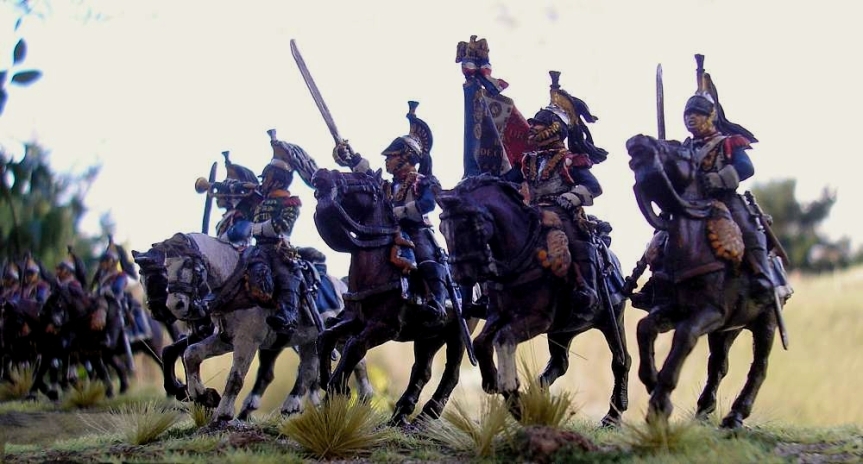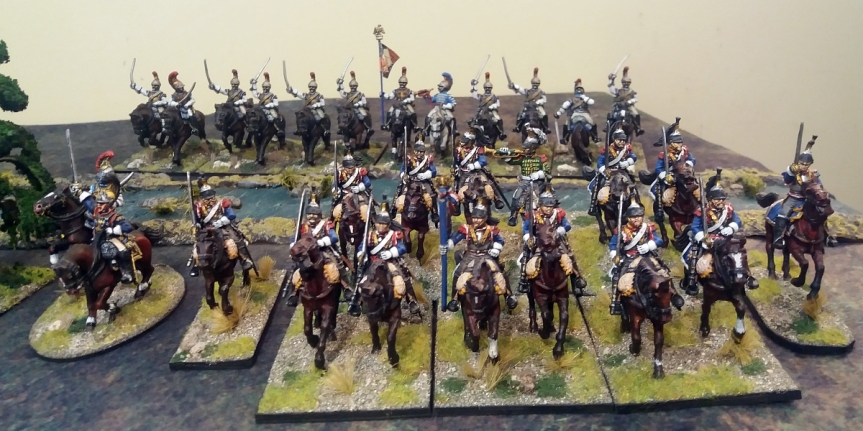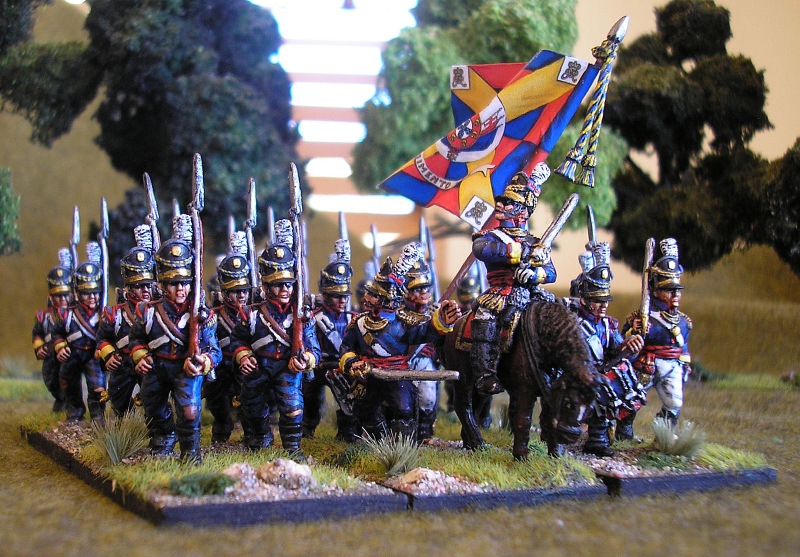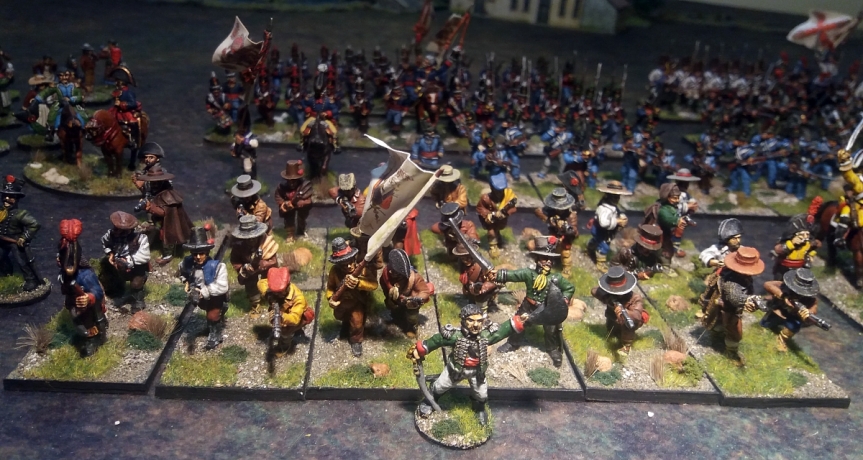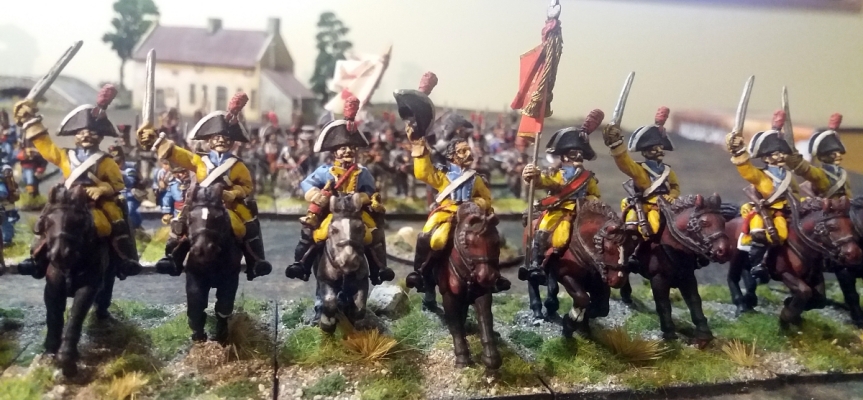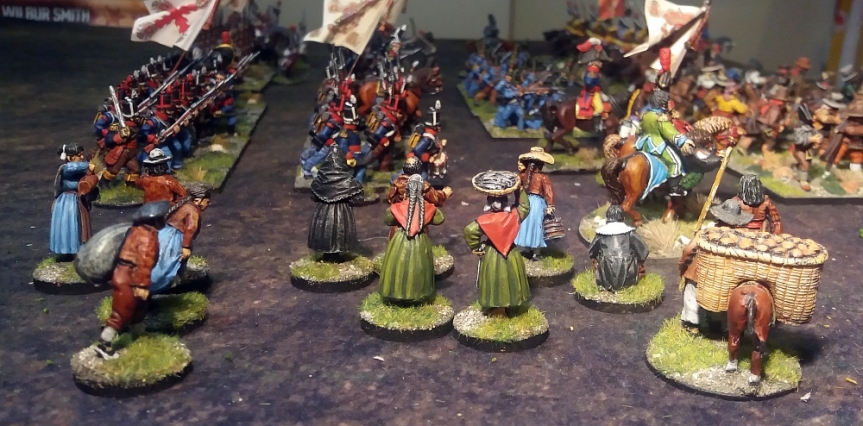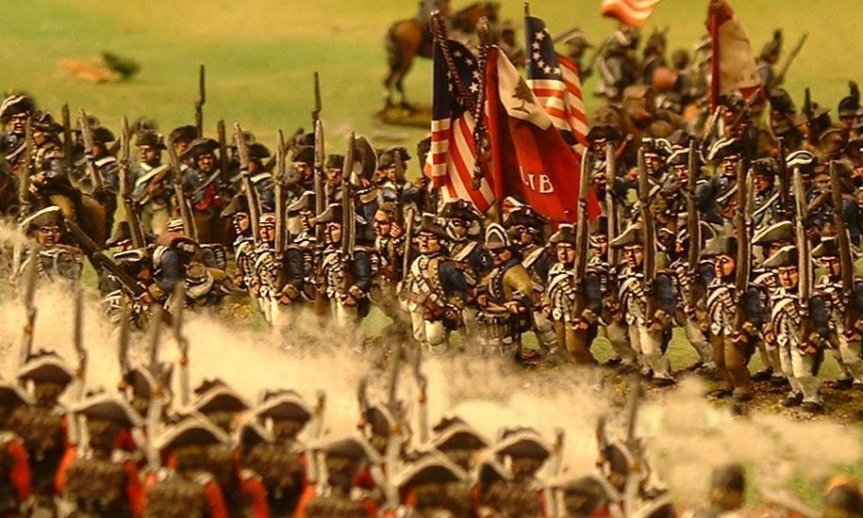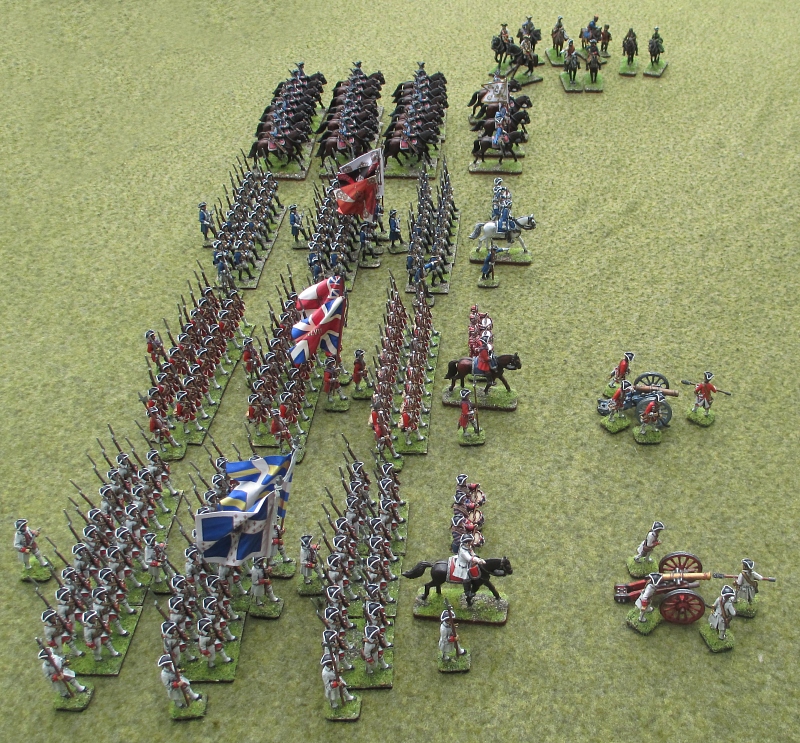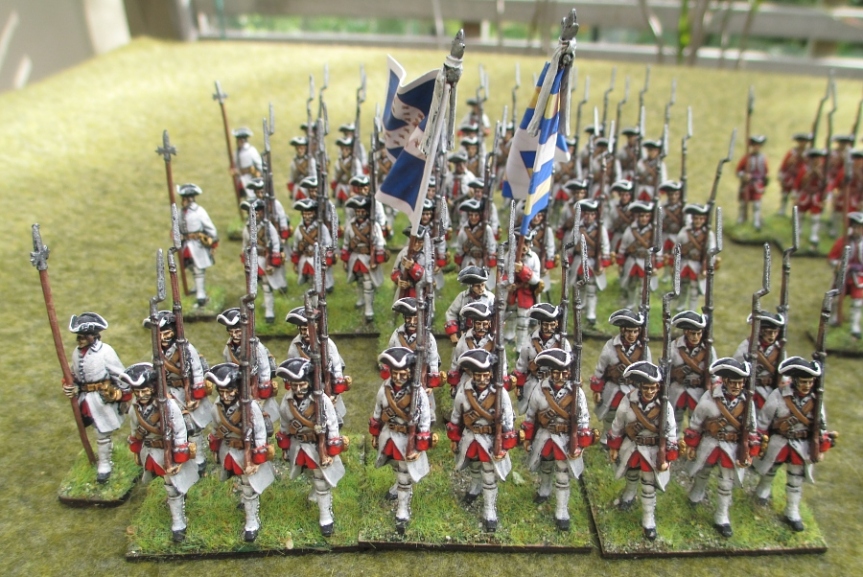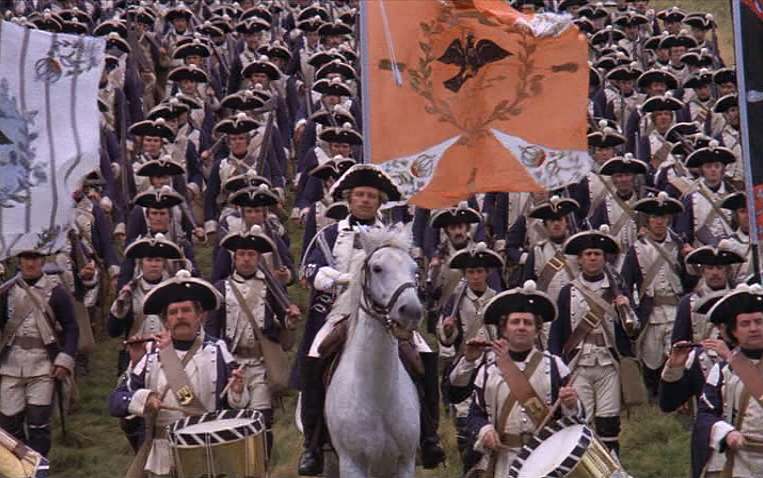Today’s ‘On Parade’ posting features the beginnings of a Confederation of the Rhine wargaming army I had planned to build up during the early 2000s, but never really got too far with.
But despite having painted only two regiments, this ‘army’ can still fight alongside my Napoleonic French forces (subject of previous postings).
The Confederation of the Rhine (or Rheinbund) was a coalition of German states created by Napoleon in 1806 as a buffer between France and its European enemies. Austria and Prussia were the only German states not included in the Confederation.
The armies of these satellite states were allied to France, and took part in many of the famous campaigns of the Napoleonic Wars. Some of the bigger states such as Bavaria and Saxony had their own armies, while smaller duchies and principalities furnished contingents to make up the composite battalions. It was these latter forces that I had planned to portray in my miniature Confederation army.
2. Nassauisches Infanterie-Regiment
I feel sorry for the men of the 2nd Nassau Infantry Regiment. In 1813 these German allies of Napoleon defected to the British. One would have thought that defecting to the eventual winning side would have been a fortunate move. However, things didn’t turn out so well for the 2nd Nassau.
They were initially shipped to Britain, then in February 1814 they embarked to sail to the Netherlands. But disaster struck as two of their four transports ran onto a sandbank off the Dutch coast, and over 400 Nassauers perished in the wrecks. To survive so many years of harsh campaigning in Spain, including saving the day at Medellin in 1809, and then to die in a shipwreck, seems an incredible stroke of bad luck.
When Front Rank advertised their Nassauers, I just had to have them for my army. Besides the beauty of these figures, I also liked the fact that, with their defection, I could use them to fight on either the French or the Allied side in a conjectural battle. And their ornate uniforms would make a nice contrast with the rest of my army.
The 2nd Nassau Infantry Regiment wore a smart green uniform with yellow trim (the Hungarian knots on their trousers are particularly nicely modelled by Front Rank). The grenadiers are resplendent in fur colpack hats with red plumes. One special feature of Nassau units is their yellowish leather equipment.
Großherzogtum Würzburg Infanterie-Regiment
In the Confederation of the Rhine, the former Bishopric of Würzburg became the Grand Duchy of Würzburg under Grand Duke Ferdinand of Tuscany. Würzburg supplied a regiment of infantry and a dragoon regiment to Napoleon’s war effort in Spain.
This unit of 28mm Front Rank miniatures started life as a French infantry battalion. But I decided that their advancing pose clashed with the attack march pose of all my other French infantry at that time, so I decided to repaint them as a Confederation of the Rhine battalion instead.
In the early part of the Peninsular War the Würzburgers wore helmets, but by 1812 they wore French shakos. So all I had to do was repaint my French infantry with white coats faced with scarlet, and – hey presto! – a Confederation of the Rhine regiment.

The drummer is an old Hotspur figure. His smaller dimensions make him look like a drummer boy against the larger Front Rank figures.
The flag is from the Warflag and Napflags sites. I’ve resized it to be about the correct size for my 28mm miniatures.
The next ‘On Parade’ posting will still be Napoleonic, but a little different this time. Keep checking!






